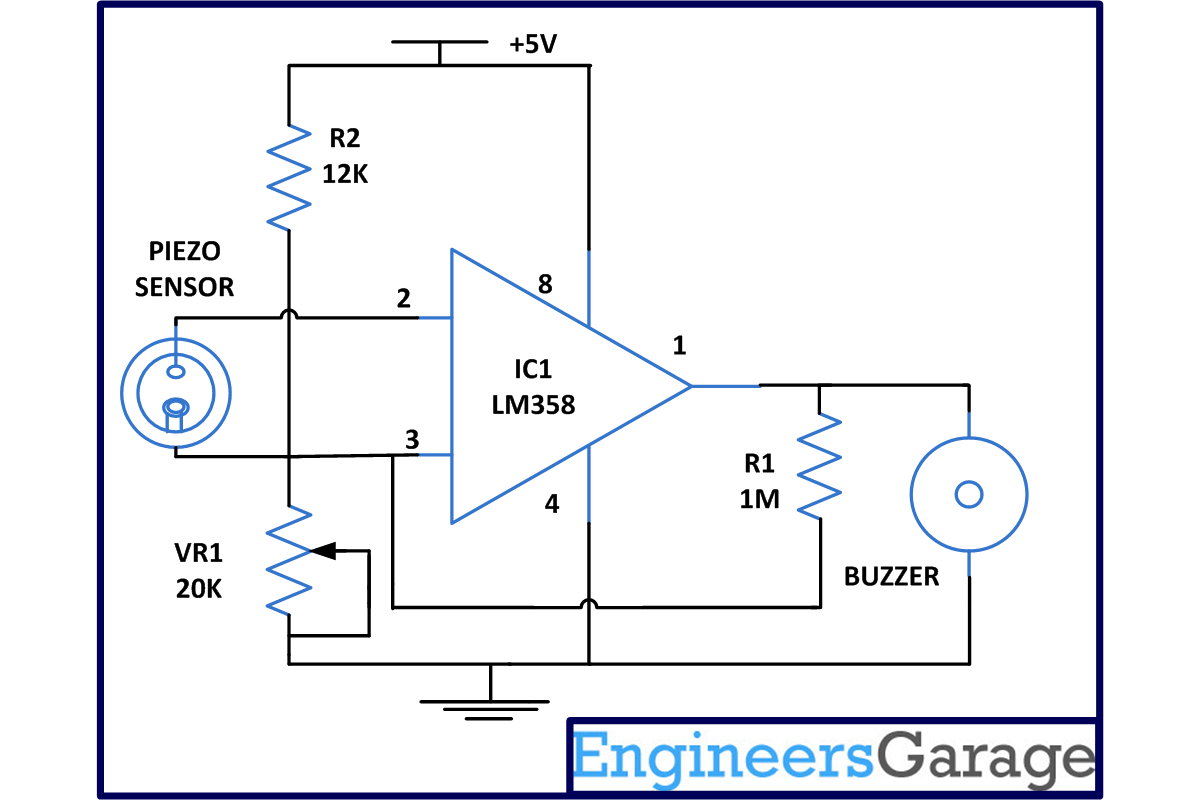● This small alarm circuit protects your valuables from thefts by engaging the alarm when somebody attempts to pick up your suitcase.
● It can be operated with the help of 3V therefore power consumption is also very less.
● It uses very less components that why it can be easily fit on the suitcase.
● Due to its small size you can easily carry this small alarm while you are travelling.
[[wysiwyg_imageupload:8355:]]
Fig. 1: Prototype Of Suitcase Security Alarm Circuit On Breadboard
The suitcase/bag alarm circuit is build around IC LM358 which is a low power transducer amplifier. The important component of this circuit is piezo sensor. Piezo sensor converts vibration or pressure into electrical signal. This same piezo element can be found inside the buzzer or you can purchase the same from market. Its working is somewhat similar to capacitors. Piezo element holds the charge when potential applied, until it is mechanically disturbed or some vibration will be there.
IC LM358 is used is configured in Schmitt trigger mode (In this output of IC falls when input exceeds upper threshold voltage and rises when input drops below lower threshold voltage) to convert input signals from piezo buzzer into a shaped output form. VR1 is used to set threshold voltage at non-inverting pin 3 of IC1. One end of R1 is connected to output and another is connected to pin 3 to pull the non- inverting input above threshold voltage of around 1.8V.
From the circuit diagram you can see that piezo buzzer is connected between the inverting and non-inverting terminals of IC1. When the piezo buzzer is touched momentarily or it receives any vibration, it discharges the store charge and because of that inverting input voltage exceeds the positive input and output goes low. At this point, voltage at positive input falls with the help of VR1 and when it reaches to lower threshold voltage inverting input pin 2 become low because of the absence of input signal. Due to which output goes high and buzzer will sound.
Assemble the circuit on small PCB and glue it on the lower side of the handle of the suitcase.
Circuit Diagrams
Project Components
Project Video
Filed Under: Electronic Projects
Filed Under: Electronic Projects



Questions related to this article?
👉Ask and discuss on EDAboard.com and Electro-Tech-Online.com forums.
Tell Us What You Think!!
You must be logged in to post a comment.